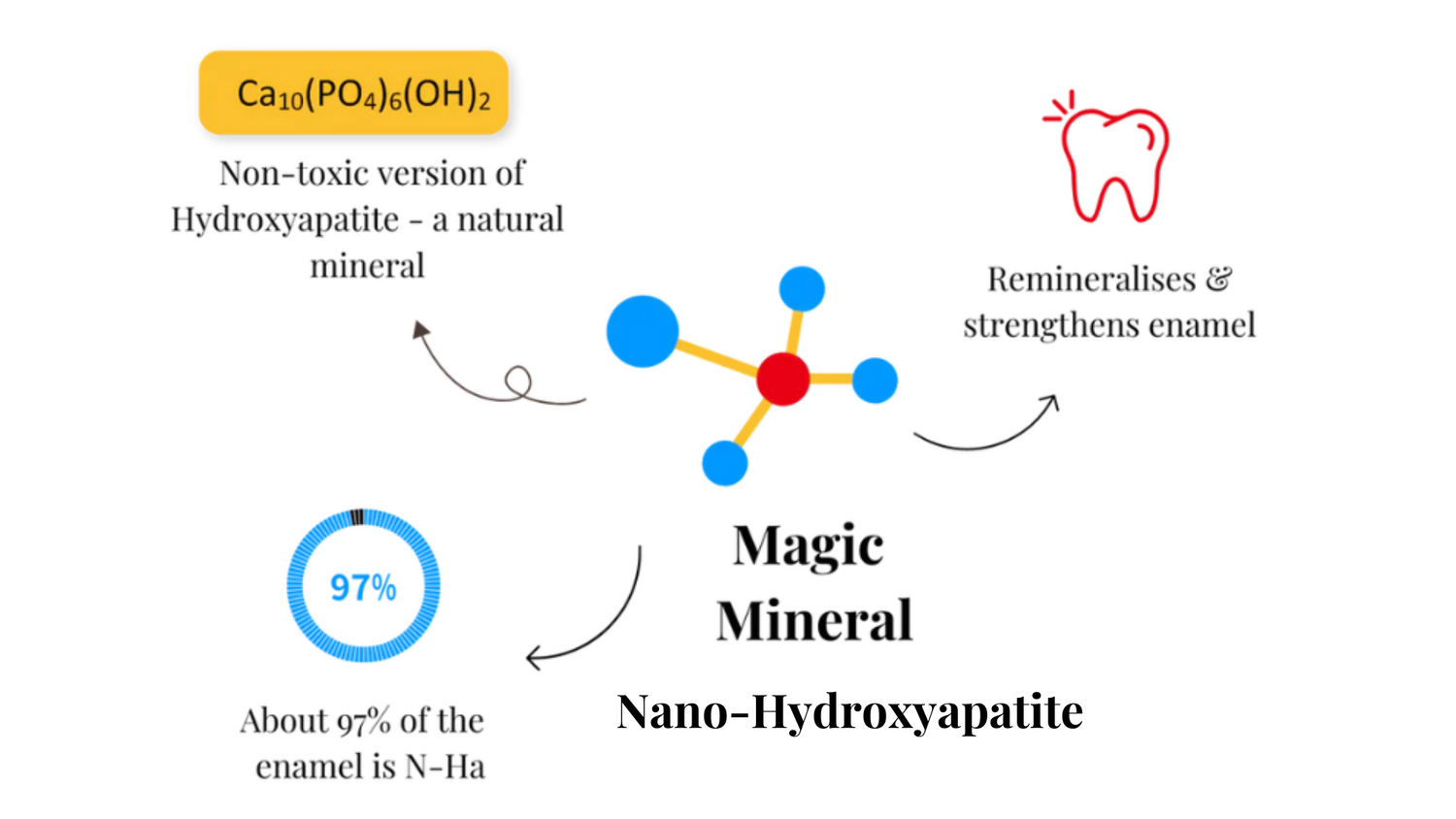Nano-Hydroxyapatite vs Fluoride Toothpaste
Are you tired of the same old routine when it comes to oral care? Do you ever wonder if the toothpaste you've been using for years is truly the best choice for your teeth? These questions are more common than you might think. At Spicta, we believe that your oral care experience should be enriching, not mundane. That's why we're here to introduce you to a revolutionary alternative to traditional fluoride toothpaste – nano-hydroxyapatite toothpaste.
How Does Fluoride Toothpaste Work?
Before we dive into the wonders of nano-hydroxyapatite toothpaste, let's briefly understand how fluoride toothpaste functions. Your teeth are primarily composed of enamel, a mineral-rich outer layer that is constantly exposed to the elements. To keep your teeth strong and resistant to decay, they rely on the minerals calcium and phosphate, found in both your saliva and enamel.
However, when harmful bacteria in your mouth create an acidic environment, your teeth face a process called demineralization. This process erodes the protective minerals in your enamel, leaving your teeth vulnerable to cavities. Fluoride toothpaste combats this by teaming up with the calcium and phosphate in your saliva and teeth to form a compound called fluorapatite. This compound acts as a shield, and forms a layer on the surface of the teeth, protecting them from further acid damage.
How Does Hydroxyapatite Toothpaste Work?
Now, let's shift our focus to the star of the show – hydroxyapatite. Unlike fluoride, hydroxyapatite is a natural component of your teeth, making up a significant portion of both enamel and dentin.
Nano-hydroxyapatite, with its tiny particle sizes between 20-80 nanometers, takes center stage in modern oral care products. These minuscule particles allow hydroxyapatite to penetrate even the tiniest crevices in your teeth, providing superior benefits.
Hydroxyapatite works in a different way compared to fluoride.
Remineralization from Within: Hydroxyapatite penetrates the innermost part of dental cavities, remineralizing enamel effectively.
Prevents Plaque and Bacterial Growth: Hydroxyapatite doesn't kill bacteria but prevents harmful bacteria from attaching to the enamel.
Benefits of Hydroxyapatite over Fluoride Toothpaste
So, what makes nano-hydroxyapatite the superior choice for oral care? Here are several compelling reasons:
Oral Microbiome Friendly: While both hydroxyapatite and fluoride have antibacterial properties, fluoride can eliminate both harmful and beneficial bacteria. Hydroxyapatite, on the other hand, prevents harmful bacteria from adhering to enamel.
Fortifies Enamel: Hydroxyapatite can increase the microhardness of enamel, strengthening teeth more effectively than fluorapatite coatings.
Non-Toxic: Hydroxyapatite is biomimetic and entirely safe, even if ingested accidentally. In contrast, fluoride has a poison control label, and excessive exposure can lead to dental and skeletal fluorosis.
Kid-Friendly: Children who may accidentally swallow toothpaste are at risk of fluorosis with fluoride toothpaste. Hydroxyapatite toothpaste reduces this risk.
Whitening: Hydroxyapatite toothpaste has been shown to lighten teeth without the need for additional abrasives or whitening agents.
Should I Switch to Hydroxyapatite Toothpaste?
Switching to hydroxyapatite toothpaste is a wise choice, especially considering its non-toxic nature and equal effectiveness compared to fluoride toothpaste.
We recommend considering hydroxyapatite toothpaste, especially if you fall into the following categories:
- Pregnant women
- Residents of areas with fluoridated water supplies
- Babies and children, especially under six years old
- Individuals with sensitive teeth should use hydroxyapatite, as it addresses the root cause of sensitivity.
Conclusion
The most significant advantage of using hydroxyapatite toothpaste is that it remineralizes your teeth without any side effects, making it a safer choice than fluoride toothpaste. Hydroxyapatite is a natural component of your teeth and offers equal efficacy in reversing dental decay. When given the option, why not choose the less toxic and equally effective alternative?
At Spicta, we're committed to enhancing your oral care experience while promoting awareness and sustainability. Join us on our journey to pioneer #sustainableoralcare in India. Make the switch to nano-hydroxyapatite toothpaste today and put your best tooth forward!
FAQs:
What is nano-hydroxyapatite, and how is it different from fluoride in toothpaste?
Nano-hydroxyapatite is a natural tooth component, while fluoride is synthetic. Nano-hydroxyapatite remineralizes teeth internally, while fluoride creates a surface layer. Understand these distinctions when choosing toothpaste.
Is hydroxyapatite toothpaste safe for children who may swallow it?
Yes, hydroxyapatite toothpaste is safe, even if swallowed accidentally. In contrast, excess fluoride ingestion from toothpaste can lead to fluorosis. Parents should consider this for children.
Can hydroxyapatite toothpaste effectively treat tooth sensitivity?
Yes, hydroxyapatite toothpaste can help sensitive teeth by remineralizing enamel, addressing the root cause of sensitivity.
Does hydroxyapatite toothpaste whiten teeth?
Yes, it has natural teeth-whitening properties, eliminating the need for additional abrasives or whitening agents.
Who should consider switching to hydroxyapatite toothpaste?
Pregnant women, those in fluoridated water areas, babies, children under six, and individuals with sensitive teeth can benefit from hydroxyapatite toothpaste. It's a versatile and safe choice for various oral care needs.




